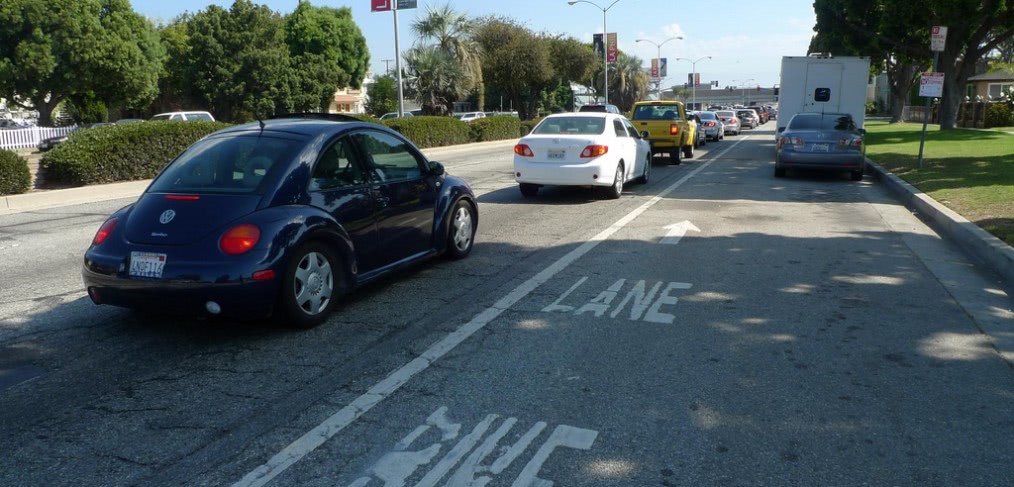
The Car Crisis (Part 3)
Parts one and two of this series looked at L.A.’s past and explained the city’s present state. Part three offers solutions to guide the future and sites other major cities as ideal examples.
It’s clear by now that traffic is a big topic of discussion for all Los Angeles residents. We spend a lot of time in our cars – and even when we’re not driving, we’re talking amongst ourselves about the state of Los Angeles’ roadways. Again and again, I find people asking, what will the future of these auto oriented streets be? How will Los Angeles accommodate more growth with traffic as bad as it already is?
There are many precedents we can look at where cities have taken a progressive approach to rethinking the design and administration of major roads to better accommodate multiple modes, integrate streetscape improvements and encourage reinvestment by the private sector. New York, San Francisco, Seattle and London have all undergone significant and notable changes to their major road networks to promote transit oriented development and a more sustainable urban lifestyle. Why couldn’t these same principles be applied in Los Angeles?
I think we should look to the arterial roads as a way to solve our ever-increasing traffic problems. As mentioned in part two, left turn lanes are the source of danger for many arterial roads. Studies show that roughly 20% of L.A. roadways are taken up with left turn lanes, but only about 5% of traffic movements are left turns. If the number of left hand turn options were reduced by half to occur every six blocks instead of every three, or completely eliminated from the road design, it would provide better traffic flow, improve pedestrian safety and allow for the introduction of other modes of transportation.
With medians no longer used for left turns, light rail tracks or articulated bus routes could be placed along green, open space. Served by stations every ¼ mile, these center medians could be heavily landscaped and feature amenities, providing additional green space, convenience retail, walking trails and even sustainable power generation for the city. Bike lanes could also be integrated into the median, thereby accommodating two additional modes of transportation without affecting automobile traffic. Examples of this design exist in many places including St. Charles Avenue in New Orleans, Beacon Street in Brookline, Massachusetts and Fitzroy Street in Melbourne, Australia.
Additionally, reducing the size of the travel lanes from 12 feet to 11 feet and eliminating on street parking during peak travel times would further benefit the ability of the arterial to deliver a higher level of service. The sidewalks on each side also need significant design attention, additional street trees convenience retail, Wi-Fi, additional lighting and cafes, newsstands and other services at key intersections would stimulate pedestrian activity and promote general redevelopment along the transit corridor. Eventually, major streets would become destination points for travelers.
It’s time for a change in Los Angeles. Now seems like an opportune time to stop and think about what kind of city we want to live in and how we can make these ideas a reality.
Images (top to bottom): Flickr – mark.hogan; UCLA Institute of Transportation Studies

